|
|
Post by Cei-U! on Dec 21, 2015 8:36:27 GMT -5
The first super-hero to win my heart was not handsome middle-aged George Reeves in his padded Superman suit but a one-eyed spinach-eating sailor. I knew him, of course, from the animated cartoons that ran on one local kids' show or another throughout my childhood. I little suspected there was more to Popeye than his eternal war with hulking Brutus for the affections of fickle Olive Oyl. It wasn't until college that I had any exposure to Thimble Theater, the syndicated comic strip that spawned ol' “I yam what I yam,” and its brilliant creator #4. E. C. “Elzie” Segar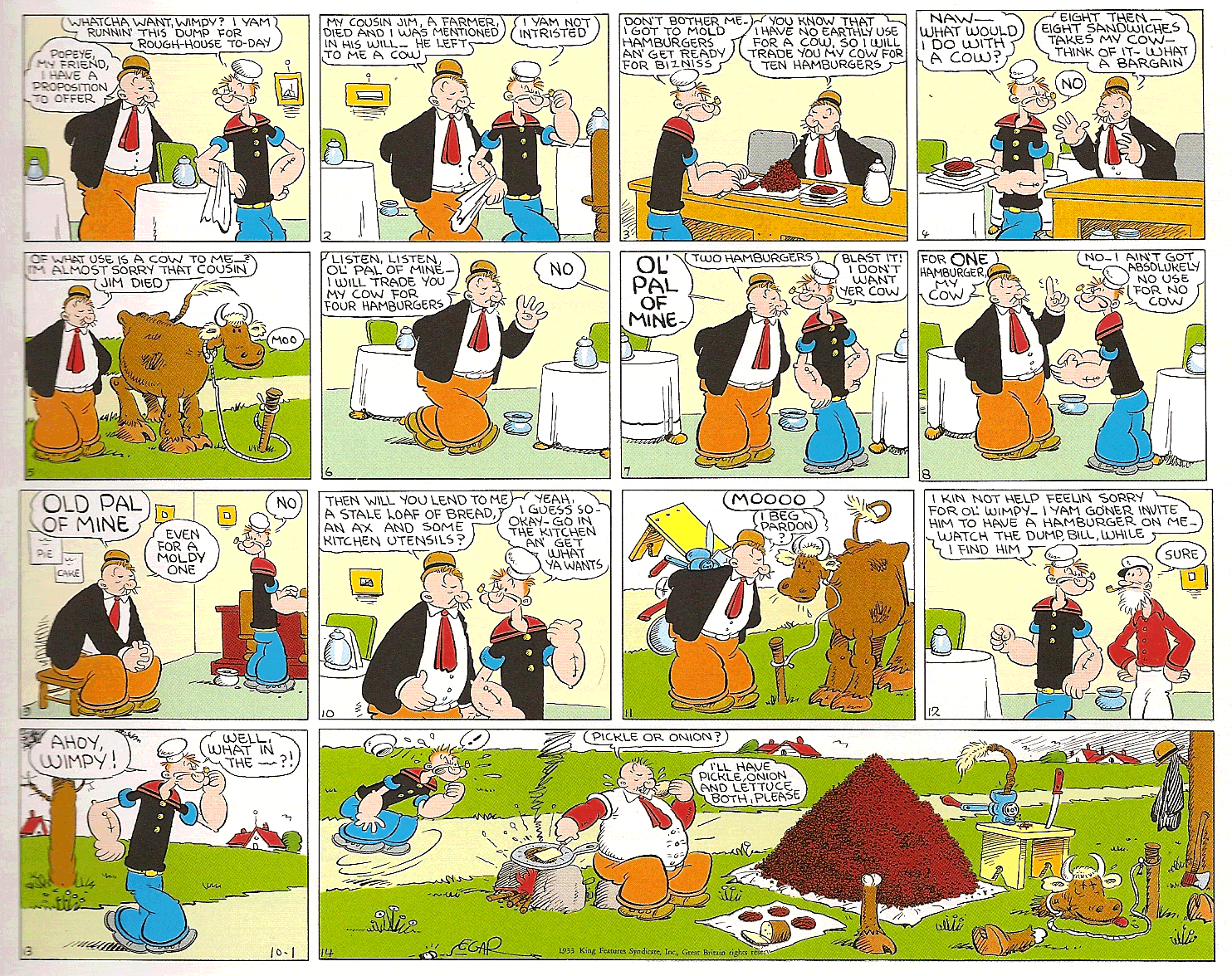 Bud Sagendorf's 1979 book and the samples in The Smithsonian Collection of Newspaper Comics had whetted my appetite but it was not until I picked up Fantagraphics' eleven volume reprint collection that I received my complete education in the singular vision of Segar. The world he created is a fascinating mix of high adventure, low comedy, exaggerated violence and political satire populated by the most endearingly imperfect cast of eccentrics this side of Dickens (my personal favorite is King Blozo, the harried monarch of an entire nation of saps, whose only refuge from his duties are his beloved, imported funny papers). His art style, firmly rooted in the bigfoot tradition, is deceptively versatile, his ear for dialogue delightful. Segar was one of a kind. If you only know Popeye from the cartoons (or Robert Altman's deeply flawed but well-intentioned 1980 movie), you don't really know Popeye at all. You owe it to yourself to track down as much Thimble Theater as you can. Cei-U! I summons me spinach! Arf, arf, arf! |
|
shaxper
CCF Site Custodian
Posts: 22,864
Member is Online
|
Post by shaxper on Dec 21, 2015 8:50:45 GMT -5
4. Jack KirbyI'll readily admit that, while I respect the importance of what Kirby did for comic book art in the 1960s, I'm not really a fan. Rather, it's the work he turned out in the 1970s, after both having been given more creative control and presumably having been influenced by the work of Philipe Druillet, that he created amazing sci-fi odysseys such as New Gods, Eternals, and (my personal favorite), Kamandi. Here he created entire new space mythologies, used his words and art to create ideas and even shapes that were totally alien and new to the reader, and somehow made it all completely accessible to an adolescent. 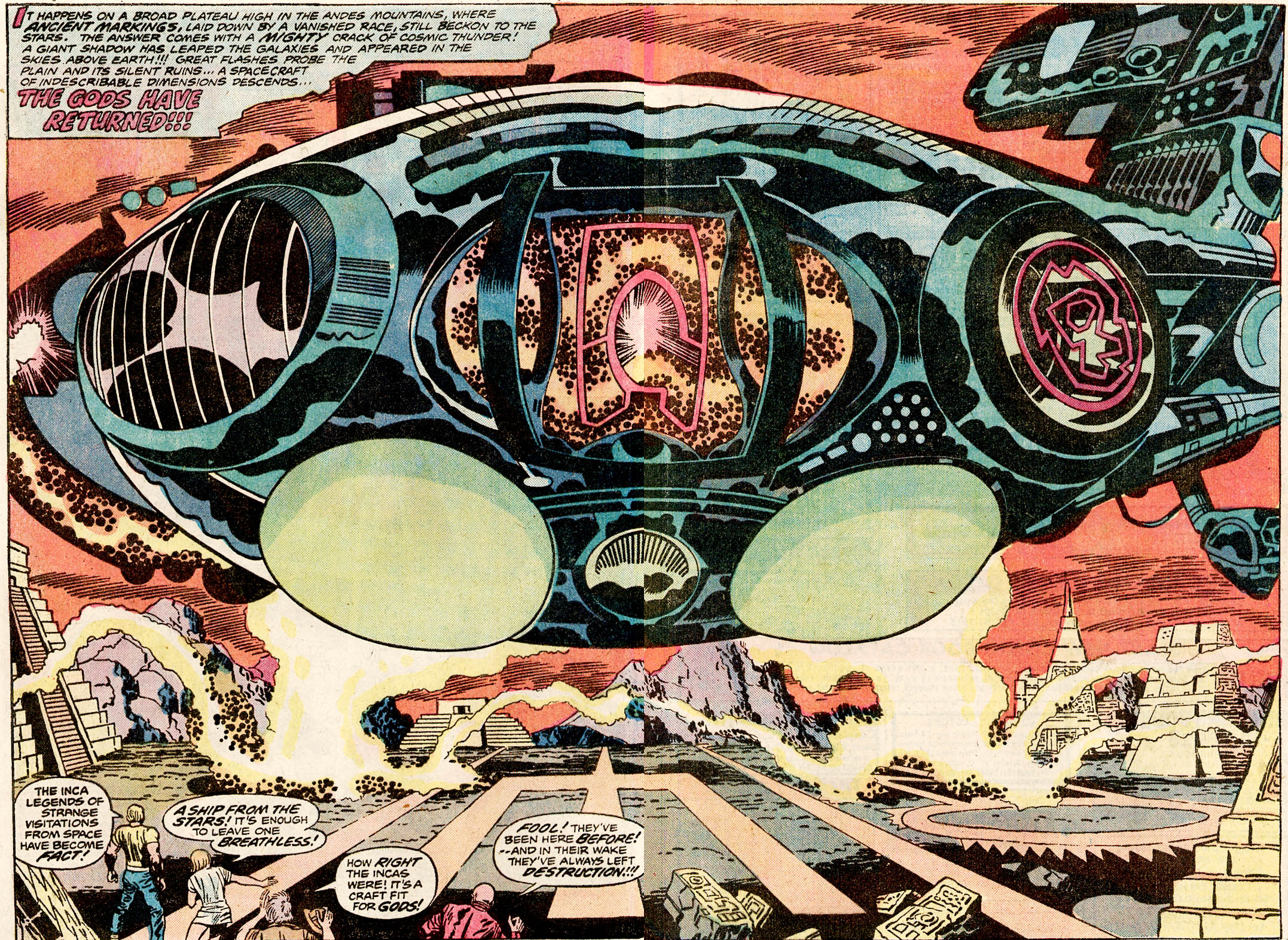 But, unlike Druillet, these stories were also dense and often meticulously explained so that, even though flaws in the premises were exposed, there was still so much meat for one's imagination to sink its teeth into.  And then, the unique challenge Kirby set himself up with for Kamandi was that, as that lone protagonist wandered the post-apocalyptic landscape, encountering new societies literally ever issue, it gave Kirby a completely new world and mythology, as well as new visual look, to introduce each time, and he rarely disappointed in that regard. 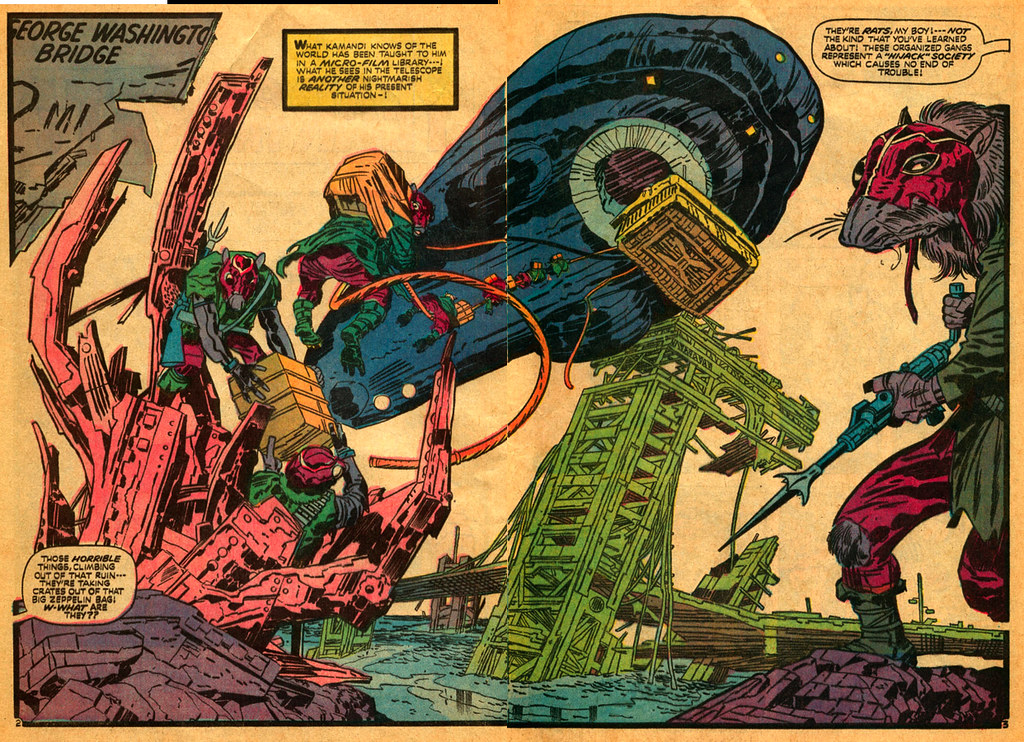 Kirby's works in the 1970s were the ultimate marriage of high minded concept, art, and writing that would have been extremely difficult for two or more people to coordinate well. And yet, he's only my #4 
|
|
|
|
Post by thwhtguardian on Dec 21, 2015 8:55:55 GMT -5
Kirby just missed my list, though I knew others would pick up my slack in that regard. I'm glad you mentioned Kamandi, out of all his work that's the one that speaks to me the most and you're dead on about why, the way it allowed him to basically do what ever he wanted from issue to issue was genius.
|
|
|
|
Post by Icctrombone on Dec 21, 2015 9:10:53 GMT -5
Kirby is due in one of the last 4 days for my list.
|
|
|
|
Post by Deleted on Dec 21, 2015 9:23:03 GMT -5
Bill Watterson - Calvin and HobbesCalvinball - One of my favorite Strips of All-Time
 I just love sports, secret agents, pure craziness, wacky sense of humor of Watterson, and most importantly my loves of Calvin and Hobbes has no bounds. This strip above you is about the best that Bill has done in his career and I love both College and Pro Football and this really cut the cake of one of the nuttiest ideas that Bill put together. And, it's still nutty today after all these years! His artwork is excellent, his storytelling is fantastic, his genius in putting it all together is legendary, and puts his love into his work day in and day out. That's why he's Number 4 on my list. Bill Watterson - Calvin and Hobbes 
|
|
|
|
Post by Roquefort Raider on Dec 21, 2015 9:34:19 GMT -5
On the ninth day of Christmas, Lightning Press gave to me... #4 Carla Speed McNeil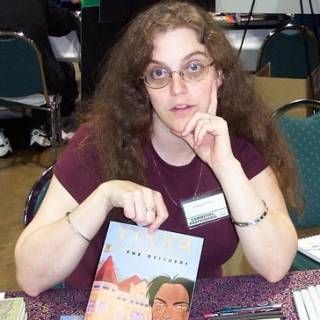 McNeil is best known for her "aboriginal science-fiction" series Finder, which in definitely a keeper (if you'll forgive the awful pun). Finder is a series of tales set in what is likely a future version of our world, one in which societies have changed in ways that are both strange and familiar, and that looks absolutely authentic. Large domed and multi-levelled cities are separated by vast tracts of land that seem to have reverted to a welcome state of wilderness; city dwellers are apparently quite content never to set foot outside of their urban universes. They're not trapped there, mind you, but like our modern day big city people, they don't see the need to venture outside of the city limits. It's dusty! There are animals! The weather isn't controlled! Technology is both omnipresent and almost invisible in that world : most people have communication hardware installed right inside their skull, for example, and there is a type of electronic kudzu that grows everywhere, sprouting TV screens. (Rich people dislike the way it attaches to their manor's doors; poor people enjoy the free light that comes from the screens). Past biotech experiments that are never detailed in the series have turned many people into half-human, half-animal creatures; sometimes the transformation goes all the way. There are non-human societies here and there; the Laeske, for example, are a type of intelligent and feathered theropod dinosaurs who enjoy running and the act of vomiting, as it reminds them of taking care of one's young. There are bipedal lions with intricate tribal rituals. This world is a very, very rich one, and a joy to visit. In cities, and in particular the city of Anvard where many stories are set, society is ruled by clans. These clans each have their preferred spheres of activity, and usually a very uniform look. The Llaverac clan, for example, consists of handsome and blond people who mostly look and dress like women; it is not uncommon for males to have breasts. The Medawar clan, meanwhile, is generally dark-haired and stolid, and often works in the medical field or the military. Complex rules dictate the way a proper clan member should behave, and it is not frequent for people from different clans to marry. It just isn't done, my dear. The main character in the series (one who is not always present) is named Jaeger, definitely one of the sexiest characters in comics (and I say that as a complete heterosexual). He's got the "nice bad guy" vibe down pat, the charming scoundrel look and attitude that people are attracted to. I wish I looked like that! (My wife too, in all likelihood!) 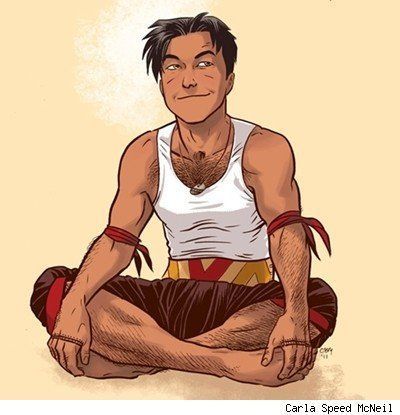 Jaeger is an outdoorsy king of guy, one who is at home in the wilderness. It's just that from time to time he likes the taste of a real cake and that of alcohol. He's also quite a womanizer with more past girlfriends than I could count. A bit like Wolverine, Jaeger can heal pretty fast. Not instantly, but the way Wolvie used to in the early days of his comic-book career. An interesting aspect of this trait is that if Jaeger isn't hurt, his system rapidly turns on itself; he becomes more and more ill, sleeps for days on end and looks as if he's constantly got a bad hangover. Maybe that's the reason he enjoys picking fights in bars : it keeps him bruised, and therefore healthy. Jaeger comes from a society, the Ascians, that resembles that of modern American Natives... complete with a long history, a rich culture, impressive tracking skills, and racism problems on the part of city dwellers. But Jaeger is not at home among his own people. He's only half-Ascian, for one, and he also holds a position that is both essential to his culture and difficult to bear for an individual : that of a sin-eater. A sin-eater is a scapegoat, one who takes away the sins of a person, and is therefore burdened with it. Sin eaters are respected for this difficult role, but also shunned; it's a bit like someone who would collect your shit after each dump and carry it around with him. Jaeger is fiercely loyal to his friends, and he plays an important role in the life of the Grovesnor family (another half-breed family started by a Medawar man -who eventually went insane- and a Llaverac woman, and their three kids who we see grow up to adulthood in the course of the series). Father figure at times, big brother, visiting uncle, lover, Jaeger is certainly a lynchpin to them... just not a very constant one. McNeil uses her universe to make comments about ours, as good SF stories often do. Finder is quite unique in that these commentaries and the exploration of human relations is the focus of the story, instead of a long plot in need of an eventual resolution. 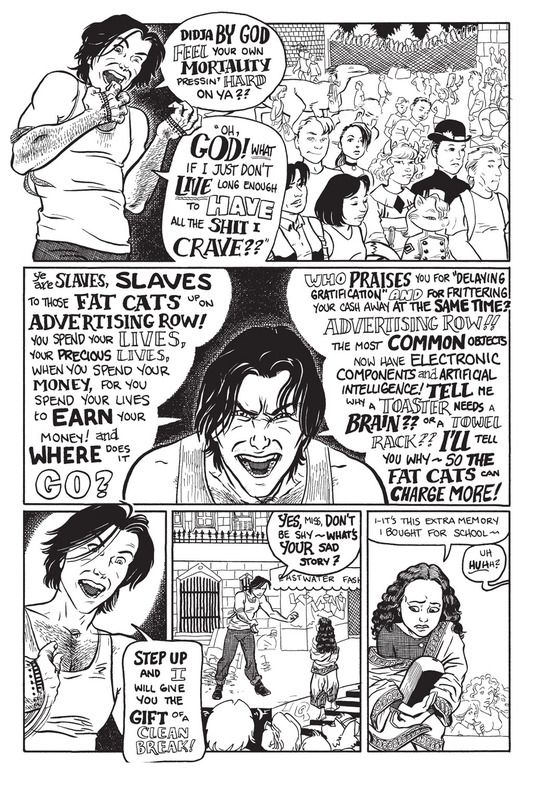 I discovered Finder while living in Maryland (McNeil hails from Annapolis); her comics (signed!) were avaiulable at my LCS, run by a fellow who encouraged independent creators. I met her at the SPX in Bethesda in the late '90s; seeing me all star struck and silent next to her table she shoved a comic sample in my hands, saying "here, take it! it's free!" in a generous gesture that reflects her nature. In a world of prima donnas, it's great to see how generous McNeil is; when I ordered a few books from her a few years ago, they came with original sketches. After many years of independent publishing, McNeil reached an accord with Dark Horse and her latest Finder books were published by that company. I wish her continued success, and hope that more people will start discovering her brilliant series. For all those who love Saga, another brilliant and unconventional SF series, Finder is for you. |
|
|
|
Post by thwhtguardian on Dec 21, 2015 9:42:56 GMT -5
I thought that comic about the Iliad would be my top must have but I think Finder just climbed to the top of the heap of"Books I've never heard of, but desperately need in my life!"
|
|
|
|
Post by hondobrode on Dec 21, 2015 9:53:15 GMT -5
# 4 is a second generation underground cartoonist, illustrator and film-maker. 2 of his works have been adapted to film. His work has appeared on the covers of the New Yorker, Vogue, Newsweek and The Village Voice. His earliest published work included pieces in Cracked magazine, and Love and Rockets, previous to his own title, Lloyd Llewellyn being released. His next title would be his most well-known work, Eightball, which ran for 23 issues. Today's cartoonist is Dan Clowes. His work often focuses on the feeling of being alienated, or being alone, or different, and has a universal to us all at some level. Best known works include "Like a Velvet Glove Cast in Iron", "Ghost World", Pussey !, and David Boring. Numerous multiple awards include the Eisner, the Harvey, the Pen award, and a variety of awards for his movie work. |
|
|
|
Post by Roquefort Raider on Dec 21, 2015 10:03:27 GMT -5
I thought that comic about the Iliad would be my top must have but I think Finder just climbed to the top of the heap of"Books I've never heard of, but desperately need in my life!" I assure you you wont regret it, Guardian! |
|
|
|
Post by Arthur Gordon Scratch on Dec 21, 2015 10:18:04 GMT -5
I thought that comic about the Iliad would be my top must have but I think Finder just climbed to the top of the heap of"Books I've never heard of, but desperately need in my life!" I assure you you wont regret it, Guardian! Her latest series at Image also is a must! |
|
|
|
Post by Arthur Gordon Scratch on Dec 21, 2015 10:56:41 GMT -5
For my pick #4, I give you my most classical one, in Osamu Tezuka Tezuka probably is the greatest cartoonist ever, with an impecable body of work that spans 43 years (he died at 61) over some 700 volumes of equal quality! Obviously influenced by Disney (who tried to block him from the US market in the 60ies, as he feard this competiton. Disney company even claimed of having never heard of Tezuka when questioned about the likness between The Lion King and Leo  ), he took it to the next level with the most humanistic library this medium ever saw, but he always kept it exciting. I guess that my first exposure to him was in the mid 80ies with the Astroboy animated (which connects to my passion with avant garde electronic music and this Ono/Kosugi wonderful LP I have), but I completely rediscovered him in the late 90ies with great french editions of his seminal works. I probably read more Tezuka books than of anyone else, and still have a few to discover, one more reason to keep on living! In Tezuka's case, considering his career, he'd more than anyone else here deserve pages of exemples of his various styles and growth, themes and philosophies, but alas, here are two of my most cherished ones, Hato and Prince Norman ! 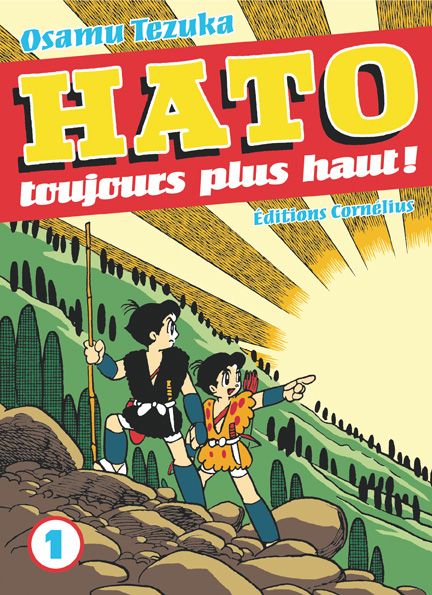 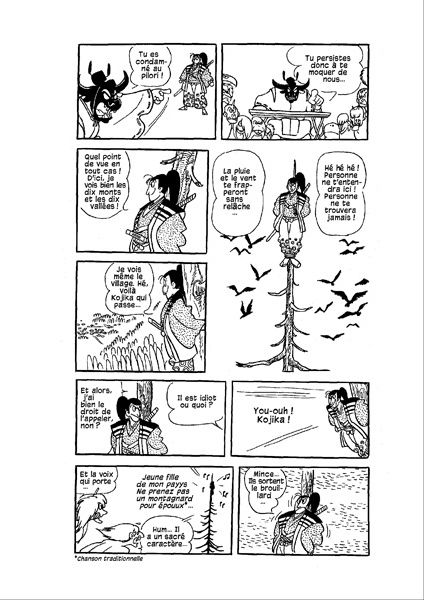 One of his most all-age creations, published between 64 and 67 in three volumes, Hato sees the life of two young orphans colide with a war between the Japan foundng gods were animism is one of the solutions and japanese legends take a very effective form. It is a delight of storytelling and plot, with great characters and an endless stream of cool scenes   In 68, Tezuka was on a roll and managed to publish htree fat volumes of this space opera of epic proportions, a testimony to his pacifist views and an alegory to WWII in a very subtle way. It feels like a mixture of Flash Gordon and the Caligari Kabinet, a wonderfull and dark aventure between planets, with lots of action and twists. The world of Tezuka is so vast that there's barely any topic he didn't touch upon, and his influence still runs deepest in the word of comics as Urasawa's recent Pluto series testifies to. He won all the awards he never sought, and only became the doctor he studied to be through his Black Jack character, but he was far more as you could feel a real passion for the destiny of all his characters. He could easily have topped my list, but he is sadly dead, and as I always have faith in the future, the next three ones still have the possibility and potential to outdo him. |
|
|
|
Post by Deleted on Dec 21, 2015 11:01:37 GMT -5
# 4 is a second generation underground cartoonist, illustrator and film-maker. 2 of his works have been adapted to film. His work has appeared on the covers of the New Yorker, Vogue, Newsweek and The Village Voice. His earliest published work included pieces in Cracked magazine, and Love and Rockets, previous to his own title, Lloyd Llewellyn being released. His next title would be his most well-known work, Eightball, which ran for 23 issues. Today's cartoonist is Dan Clowes. I only knew him in EIGHTBALL and that's my only exposure of him and I have mixed feeling that's very difficult to put in words here and I love the way he scripts his work and one of the best storytellers around - I have the first 12 issues and hoping to get copies of the reminding issues and if I known him earlier he would made #12 or #11 on my list. I started reading his stuff this year and hondobrode it's a grave injustice for me to not include him in my 12 days of CCC. Fortunately, I know the Comic Book Store Personally and he promised me that he will track down the remaining issues of EIGHTBALL for me and I'm going to have to look for more of his work and he will make my list next year for sure. I'm a fan of his work and I like the way he puts it altogether. |
|
|
|
Post by thwhtguardian on Dec 21, 2015 11:20:56 GMT -5
On the ninth day of Classic Comic Christmas I give unto thee... Sam Glanzman I grew up pretty lucky(in more ways than even this simple story I'm about to share)in that my father was a huge comic book fan himself and had no problem sharing his collection with me. His collection was how I was introduced to Batman, Superman, Swampthing and a myriad of others long before I could read, but there was always one type of comic I could never get into, and it was a genre that dominated his collection as he himself was a veteran and that was war comics. Despite the over whelming number of those books in my father's collection I could never really get into them, and by and large although I admire a lot of the talent that produced them I still can't get into them to this day...except for the work of Sam Glanzman.
 And I think that's because although his narratives do feature the ugly, grittiness of actual war that they also feature the human side as well. The characters in his work, even the non autobiographical stories, feel completely human and the way he captures the every day minutia of their lives as well as the action makes the stories relatable in a way that other war stories are not.  It's just beautiful work, and more than that I love that it's given me an in to a part of my father's life that I found difficult to breech in the past. |
|
Crimebuster
CCF Podcast Guru
Making comics!
Posts: 3,958 
|
Post by Crimebuster on Dec 21, 2015 11:26:53 GMT -5
4. Wendy PiniThough she's best known for her art, Wendy Pini is a real double threat, handling most of the writing duties on her work as well. No slight intended to her husband Richard, but from what I can tell, he mostly edits and co-plots, with Wendy handling the rest. Her art is a unique fusion of American and Japanese influences, and for my money, the original Elfquest series stands as one of the best fantasy sagas in comic history. 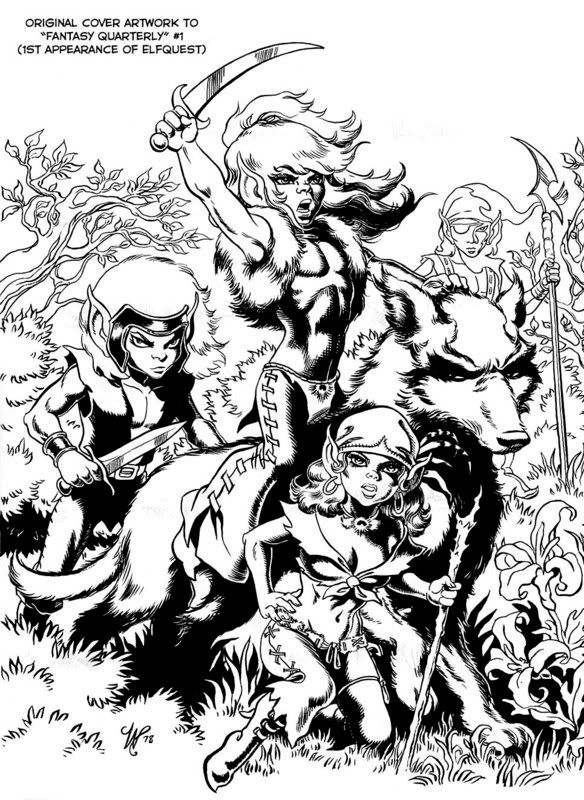 
|
|
|
|
Post by thwhtguardian on Dec 21, 2015 11:34:20 GMT -5
I love Elfquest and I'm glad that Ms.Pini has been mentioned twice now.
|
|